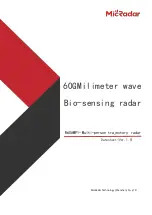
NAV: HOW TO ENTER A FREQUENCY
All frequencies entered into the NAV Section enter via the Standby route, that is, the
frequency is entered (seen in the Standby displays) and then transferred to the Active
by depressing the "arrowed" transfer push button. The next frequency entered is the
Standby frequency.
The Active frequency and its resultant data is not affected by the rotation of either the
MHz or the KHz knobs.
NAV: TRANSFER
Pressing this white arrowed momentary switch "flips" the display. The Standby
frequency becomes the Active and the Active becomes the Standby. A second
depression exchanges the frequencies.
2.9.3 Loss of Display
The following is not expected, however, as there is a built-in preset Standby
frequency, it can be used if the display should blackout.
If the NAV DISPLAY should have a total blackout, yet the indicator appears
unaffected, verify that the station being received is the station selected prior to the
blackout, pull IDENT. If you are still set to your desired frequency continue your
flight, it can be presumed that you had a display or a display circuit failure.
If the COM DISPLAY should have a total blackout, verify that the COM is still set to
the frequency selected prior to the blackout. Verification can be made by initiating a
transmission and listening for the reply. If you are still set to your desired frequency,
it can be presumed that you had a display circuit failure.
2.9.3.1 Changing Frequencies With Loss of Display
NAV SECTION:
Knowing what frequency you had set in Active and Standby windows, it is now a
matter of rotating the KHz and MHz knobs clockwise (incrementing) or
counterclockwise (decrementing) detent-by-detent: KHz, 05 KHz steps, MHz, 1 Mhz
steps, to change frequencies. Remember all entries go into the Standby display
window before they can be transferred to the Active display window.
JUNE 1996
REV. C
12





































